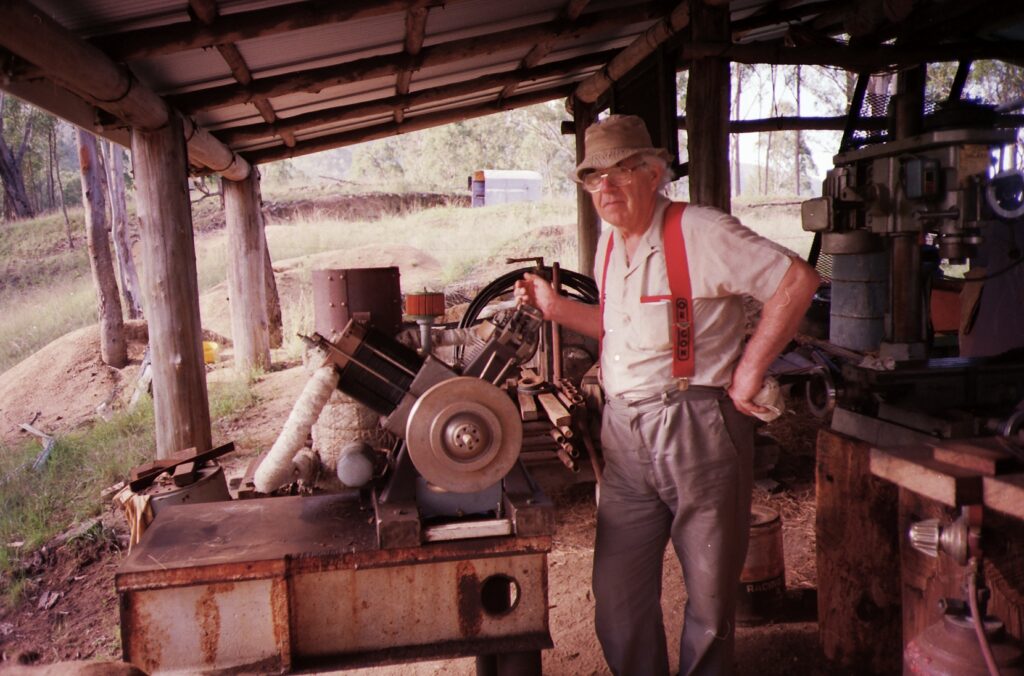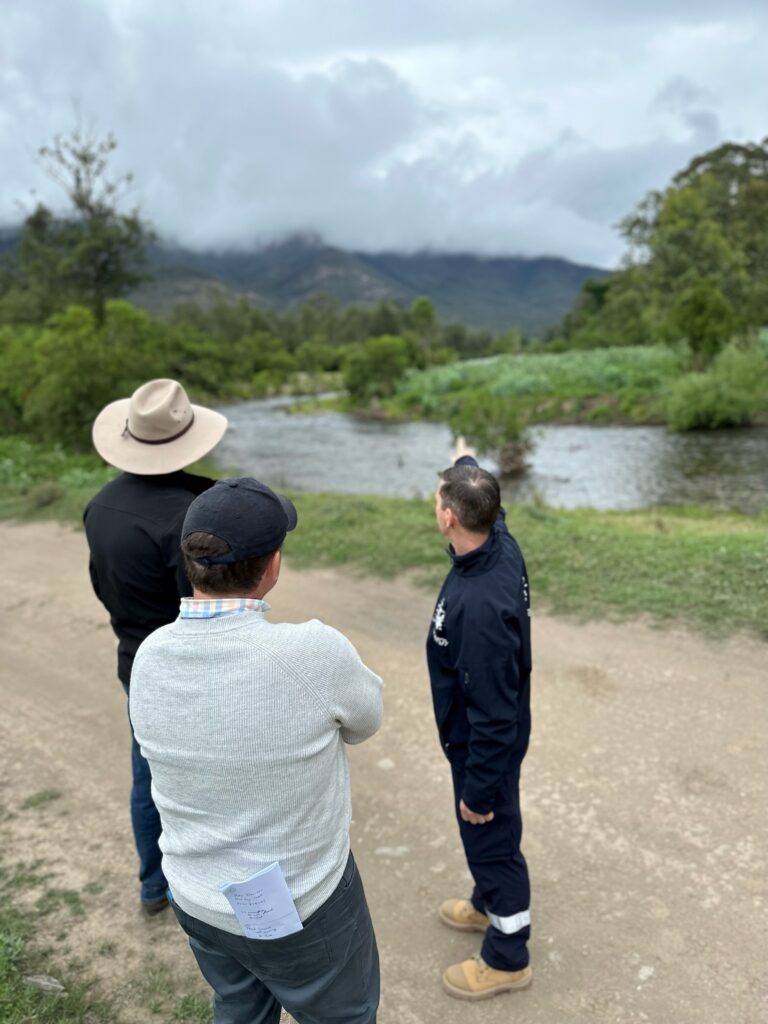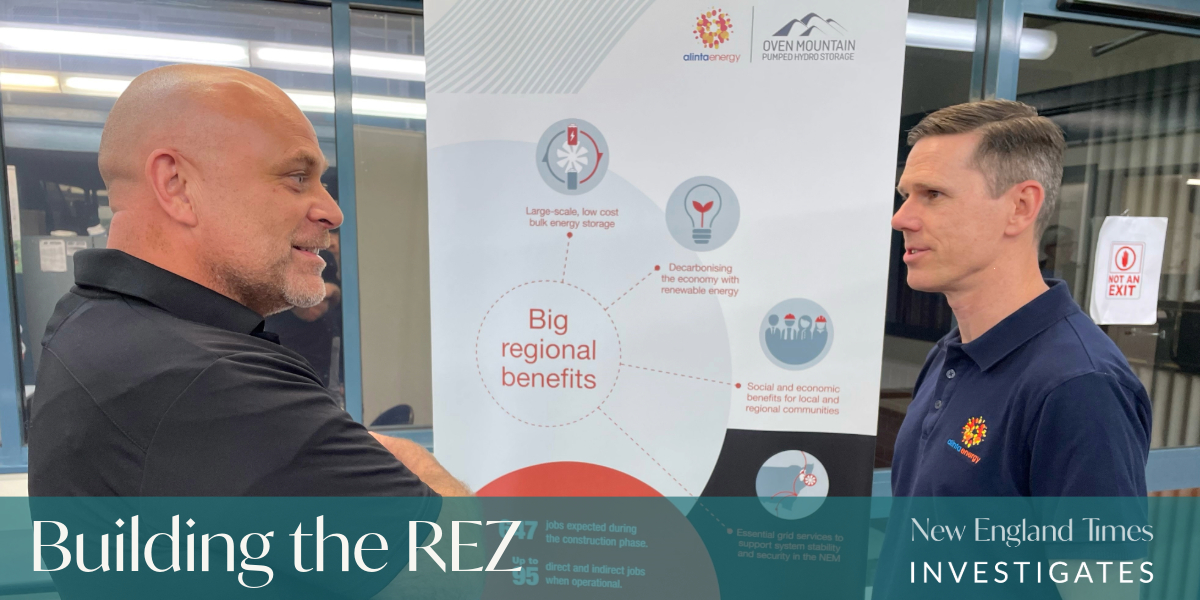This story is part of our feature series on Building the REZ in the New England.
Read more from this series here.
An idea spawned more than 30 years ago to build a hydroelectric scheme in the upper Macleay River region is set to become reality as part of the New England REZ.
One of the lesser known and less visible projects in the REZ, the Oven Mountain Pumped Hydro Energy project is in the final stages of the cumbersome Environmental Impact Statement (EIS) process with construction expected to begin next year.
Local landowner and engineer Bob Hayes is credited with being the brains behind the off-river development that proposes to generate 900MW of renewable electricity and storing enough water for up to eight hours of dispatchable energy for storage and distribution.
Bob passed away in 2008, but his dream lives on through his three sons and the Hong Kong owned Alinta Energy, which took full control of the project in September last year.
The project, which will be hidden away on the Haye’s family property near Georges Junction between Kempsey and Armidale, is the most advanced of three hydroelectric schemes tagged as Critical State Significant Infrastructure (CSSI) by the state government.

Bob’s son, Mark Hayes, said his father came up the idea while taking a rest in a creek bed on one of his many bushwalks on the family’s 2300-hectare property.
“He recognised all the features needed for a pumped hydro scheme on the property. He was well ahead of his time,” Mark said.
Mark said today’s project builds on his father’s preliminary designs and investigations and the family’s connection to the land.
“This hydro scheme will take up a small land print and the remainder of our property will be preserved.”
“We are thrilled that this project will have lasting benefits for Australia and the local community, and that our father’s dream is being fulfilled.”
Alinta Energy project manager, Anthony Wiseman, explained that running water between upper and lower water reservoirs on the Hayes’s property will generate the renewable energy.
“Water will be released from the upper reservoir, falling over 600 metres through a high-pressure tunnel to an underground power station, and then through to the lower reservoir. Around 25 per cent of the energy produced will be used for pumping water back to upper reservoir.”
“Pumping and releasing water between two reservoirs on private land means there’s no need to dam the Macleay River, and it won’t have a net impact on local water use,” Anthony said.
Shifting the hydroelectricity to the grid will require transmission line upgrades between the site and Armidale with Transgrid and Energy Co currently undertaking feasibility studies.
The project seems to tick all the renewable boxes without the landuse conflict or community controversy that can be attached to solar and wind projects.

between Armidale and Kempsey in a secluded location.
It is less visible than large scale wind and solar infrastructure and is in a secluded location, and local farmers and residents will welcome much needed improvements to the Armidale-Kempsey road. Alinta also won favour with Armidale City Council after inking a planning agreement that will deliver $30 million to the Council’s future fund.
Anthony believes a diverse engagement process undertaken by Alinta has also taken any heat of the planning approval stages.
“Consultation with the community is not a one size fits all approach. We have used different means to engage with the community depending on the stage that the project is at.”
Anthony said Alinta have found recent drop-in sessions in communities like Armidale and Kempsey have been the most effective during the later planning and approval stages.
“They create a great one on one environment for community member to get all the information about what may concern them or about opportunity to be involved in the project.”
“Prior to that we used more formal presentation and forums for the community and stakeholders and had a shop front in Kempsey for people to come in to find out more.”
“The project is now at the advanced stage of development with the environmental impact statement on exhibition in September last year, which we had 90 responses too.”
“Those responses included potential impacts to plant and wildlife species, the river, local housing and cultural heritage.”
“We have amended our impact statement to reflect those themes. Some of the actions we have taken include redesigning our access roads to reduce the needs for significant earthworks and address potential drainage issues.”
Changes have also been made to construction methods, management of spoil and the addition of three temporary accommodation camps for workers to reduce the pressure on local housing supply.
“The response from the community has been very positive. We are now in that final phase of receiving any requests for information from the various NSW government departments on the amendments report.”
“Hopefully, that means we will have development consent by the end of the year. Our target is to commit to the project in the middle of 2025. The construction timeframe is six years, so full commercial operation should start in the back half of 2031.”
Anthony said the Oven Mountain project can also support the ongoing development of energy infrastructure in the New England REZ.
“The inclusion of the Oven Mountain Hydro project gives the grid a lot of strength and stability to be able accommodate more of those renewable energy projects.”
“Pumped hydro allows for excess power to be stored, working like a giant battery. Water is pumped up to the top reservoir when there is a lot of energy being generated by the other solar and wind projects in the New England REZ, and then that water is pushed down through the generating turbines when there is less renewable energy being generated.”
Anthony said it will also result in many market and environmental benefits, including an annual reduction of approximately 400,000 tonnes of CO2-e in generation emissions.
The project is estimated to cost A$1.97 billion with around 600 jobs created during construction. Oven Mountain will have an operational life of over 100 years.
Top image: Alinta Energy Project Manager Anthony Wiseman (right) discussing the Oven Mountain Pumped Hydro Energy project at one of the company’s recent drop-in sessions for community members.
This story is supported by grant funding from the Local Independent News Association (LINA) and the Meta Australian News Fund administered by the Walkley Foundation.
Like what you’re reading? Support New England Times by making a small contribution today and help us keep delivering local news paywall-free. Donate now

